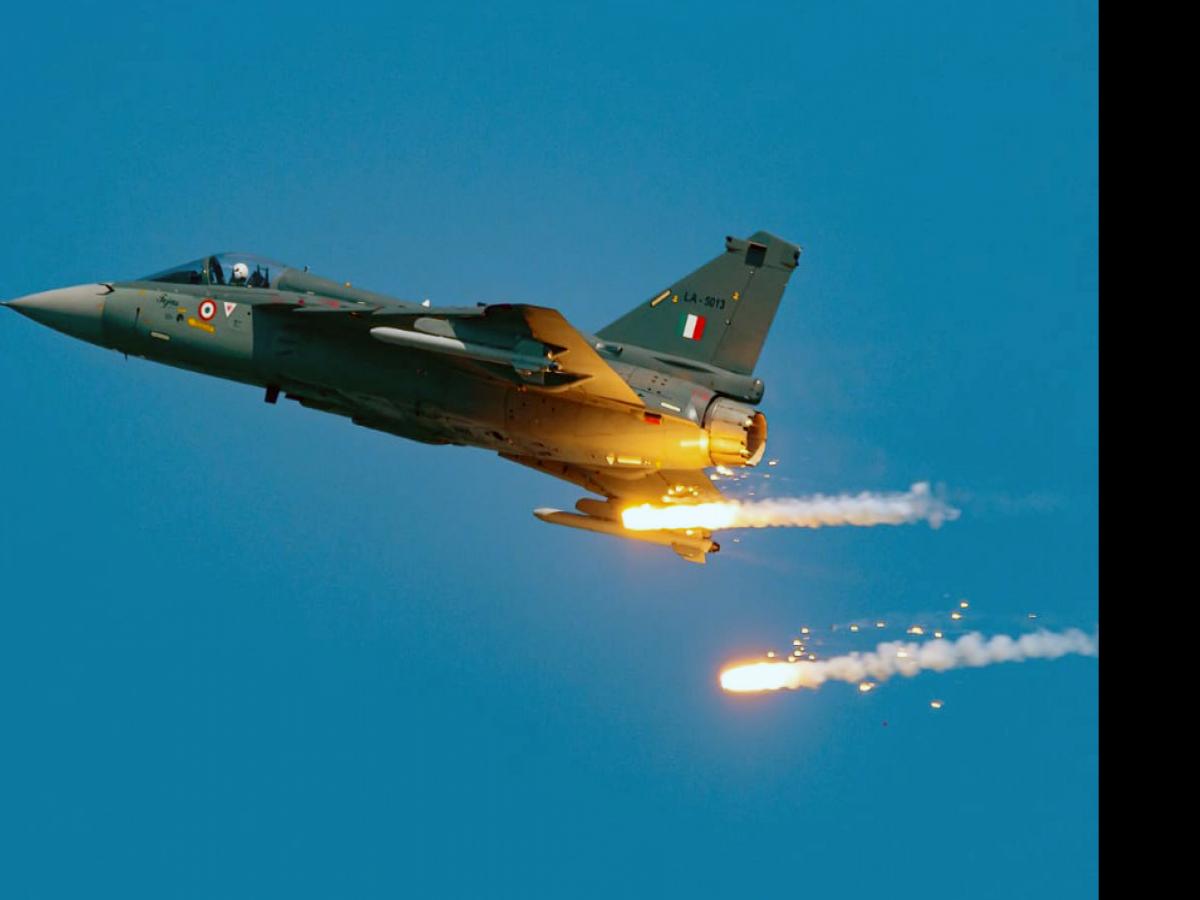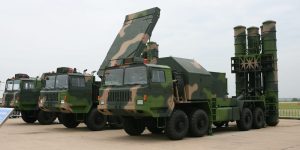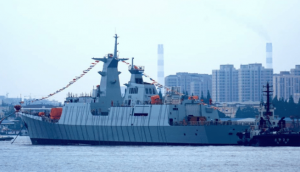India – Tejas / LCA
Specifications:
Tejas / LCA is a lightweight, supersonic, multi-role combat aircraft. It was made indigenously by India for the first time. It is a fourth-generation aircraft with a single reliable engine, namely, the General Electric 85kN F404-GE-IN20 turbofan engine, which can fly at a maximum altitude of 15200 m. The engine varies with different production versions and prototypes. The Defense Research and Development Organization (DRDO) is working towards developing an advanced variant of Tejas / LCA with two engines that would enhance the combat and operational capacities of the Indian Air Force (IAF).
Maiden Flight:
The first flight of this indigenously manufactured aircraft was made in January of 2001 when then Indian PM Atal Behari Vajpayee named it Tejas (radiance in Sanskrit). The LCA Demonstrator I aircraft first flew in 2001, while the LCA Demonstrator II aircraft made its first flight in June 2002. The Tejas naval prototype undertook its first flight in April 2012. In January 2020, the maritime prototype of Tejas completed a flight test aboard the Indian Navy’s aircraft carrier, named INS Vikramaditya. There are only two squadrons armored with Tejas LCA. One is squadron no. 45, named Flying Daggers 45, formed in July 2016, and the second is squadron no. 18, named Flying Bullets, formed in May 2020. In December 2013, the Tejas LCA successfully undertook weapon release flight tests, and in the same year, it received the Initial Operational Clearance (IOC). By December 2019, the aircraft had already completed about 4599 test flights up to speeds of Mach 1.4. The first foreign show in which Tejas LCA participated and showcased itself was the International Air Show 2016 held in Bahrain.
Induction:
Two indigenous built Tejas Light Combat Aircraft (LCA) were firstly inducted in Flying Daggers 45 – an IAF squadron, in 2016, after receiving the Initial Operational Clearance. It was later installed as a fully weaponized fighter aircraft in IAF in February 2019, after receiving the Final Operational Clearance, and entered into IAF service in May 2020. The IAF fighter fleet mostly comprised MiG-21 and Tejas LCA fighter aircraft fleet fulfilled the need to induct an advanced and better aircraft fleet by replacing the MiG-21 series.
Production:
The Indian government inaugurated the manufacturing process of Tejas aircraft in 1984. The government established the Aeronautical Development Agency (ADA) of the Indian Department of Defense for fighter aircraft development. Hindustan Aeronautics Limited (HAL) manufactured the combat aircraft designed by the Aeronautical Development Agency (ADA). This aircraft was built for the IAF as well as the Indian Navy. For IAF, there are being developed Tejas LCA fighter aircraft and Tejas LCA trainer aircraft. The fighter aircraft is one-seater, and the trainer aircraft is a two-seater. For the Indian Navy, the Indian government intended to develop different versions; Tejas LCA fighter aircraft and Tejas LCA trainer aircraft. But the naval variant of Tejas Mark 1 and Tejas Mark 2 aircraft was canceled to replace them with HAL Twin Engine Deck Based Fighter (HAL TEDBF).
There are two clearance versions of Tejas aircraft; final operational clearance version aircraft (FOC aircraft) and initial operational clearance version aircraft (IOC aircraft). Moreover, in 2002, the Indian government approved a development program for a carrier variant of Tejas to replace a fleet of Sea Harriers. The three production variants of Tejas LCA aircraft are Mark 1 (Mk1), Mark 2 (Mk2), and Mark 1A (Mk 1A). The Tejas LCA Mark 1 costs around $ 28 million. The IAF is planning to develop a more advanced and more compatible variant of Tejas LCA named Tejas LCA – 1A or LCA Mk-1A by 2021 and its induction by 2023. Also, the Mark 2 variant of Tejas is scheduled to take its first flight in 2022.
Capabilities:
Tejas LCA is a light combat aircraft and has the capacity to equip itself with air-to-air (A2A) missiles, air-to-surface (A2S) missiles, anti-ship missiles, electronic warfare pods, drop tanks, and rockets. It possesses high agility and has the capacity to meet the Indian Air Force operational and combat requirements. It marked the Indian defense production system’s self-reliance and is deemed the future backbone of the IAF fighter fleet. Tejas possess many critical and advanced operational capabilities like an Active Electronically Scanned Array (AESA), Air-to-Air Refuelling (AAR), Air-to-Ground weapons, and Electronic Warfare (EW) suite, and long-range Beyond Visual Range Missile (BVRM) capabilities. It is also capable of carrying a variety of advanced weapons like cluster munitions, standoff, precision-guided, and laser-guided weaponry.
It can take down the enemy aircraft from a safe distance because of its long-range Beyond Visual Range Missile (BVRM) capabilities and capacity to fly to destinations as far as 1700 km without stopping. Furthermore, its action radius can be up to 500 km. The FOC version aircraft can travel at 2205 km/hr, and the IOC version aircraft at 2000 km/hr. The FOC aircraft is more efficient than IOC aircraft – because of specific advanced capabilities like more range and enhanced missile capabilities.
Structure:
Specific composite and lightweight materials like aluminum alloy, carbon fiber composites, lithium and titanium alloy form 43%, 42%, and 15% of the spatial framework of Tejas, respectively. The aircraft incorporates efficient electronics (for example, multimodal radar with various modes of operation), relaxed static stability, a unique aerodynamic configuration, and digital avionics. It also has a quadruplex fly-by-wire automated flight operating system. Tejas LCA has shoulder-mounted delta wings framed by composite spares and ribs with a delta platform design. It has no horizontal tail. The aircraft consists of a Sagem SIGMA 95N ring laser gyroscope inertial navigation system with an integrated global positioning system (GPS) fitted in its navigation suite. The cockpit of the aircraft includes an advanced communication suite with data links and an efficient interrogator, health monitoring systems, an environment control system, an alert system for land proximity, a global positioning system, a navigation system, and three 1553B 32-bit mission computers.






